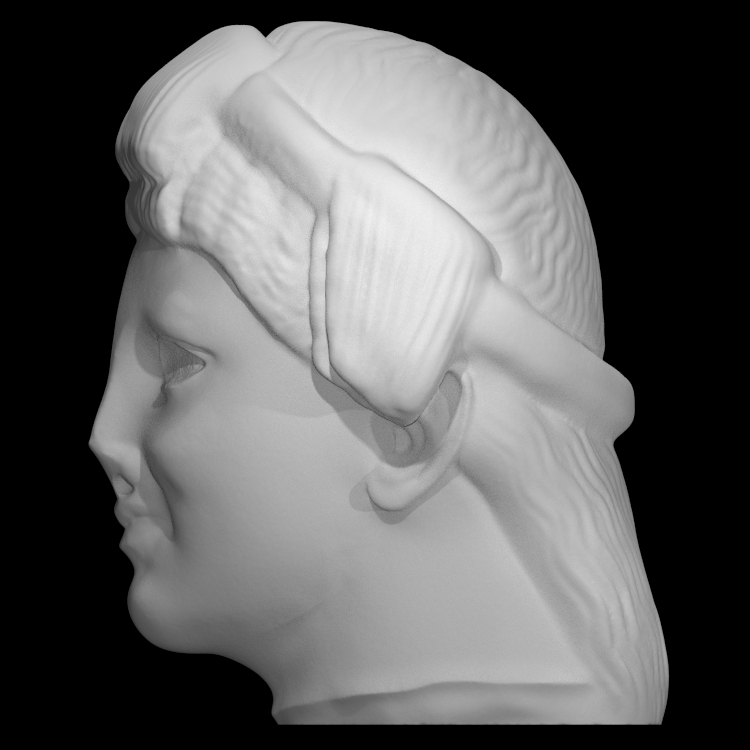
Marble Head of Apollo at The Metropolitan Museum of Art, New York
myminifactory
The looped hair arrangement evokes that of the young god Apollo as he was represented in statues dating to the late 6th and early 5th centuries B.C. Archaizing figures were popular in the Roman period, and this head, probably set on a rectangular herm shaft, would have been a suitable garden ornament. We can deduce by hes concave eyes, that this head had jewels to represent hes eyes. This statue, from which only this head survives, was carved from Pentelic marble. The god Apollo is one of the most important and complex of the Olympian deities in classical Greek and Roman religion and Greek and Roman mythology. The ideal of the kouros (a beardless, athletic youth), Apollo has been variously recognized as a god of music, truth and prophecy, healing, the sun and light, plague, poetry, and more. Apollo is the son of Zeus and Leto, and has a twin sister, the chaste huntress Artemis. Apollo is known in Greek-influenced Etruscan mythology as Apulu. As the patron of Delphi (Pythian Apollo), Apollo was an oracular god—the prophetic deity of the Delphic Oracle. Medicine and healing are associated with Apollo, whether through the god himself or mediated through his son Asclepius, yet Apollo was also seen as a god who could bring ill-health and deadly plague. Amongst the god's custodial charges, Apollo became associated with dominion over colonists, and as the patron defender of herds and flocks. As the leader of the Muses (Apollon Musegetes) and director of their choir, Apollo functioned as the patron god of music and poetry. Hermes created the lyre for him, and the instrument became a common attribute of Apollo. Hymns sung to Apollo were calledpaeans. In Hellenistic times, especially during the 3rd century BCE, as Apollo Helios he became identified among Greeks with Helios, Titan god of the sun, and his sister Artemis similarly equated with Selene, Titan goddess of the moon. In Latin texts, on the other hand, Joseph Fontenrose declared himself unable to find any conflation of Apollo with Sol among theAugustan poets of the 1st century, not even in the conjurations of Aeneas and Latinus in Aeneid XII (161–215).Apollo and Helios/Sol remained separate beings in literary and mythological texts until the 3rd century CE. (Credit; MetMuseum, Wikipedia) This object is part of "Scan The World". Scan the World is a non-profit initiative introduced by MyMiniFactory, through which we are creating a digital archive of fully 3D printable sculptures, artworks and landmarks from across the globe for the public to access for free. Scan the World is an open source, community effort, if you have interesting items around you and would like to contribute, email stw@myminifactory.com to find out how you can help.Scanned : Photogrammetry (Processed using Agisoft PhotoScan)
With this file you will be able to print Marble Head of Apollo at The Metropolitan Museum of Art, New York with your 3D printer. Click on the button and save the file on your computer to work, edit or customize your design. You can also find more 3D designs for printers on Marble Head of Apollo at The Metropolitan Museum of Art, New York.
